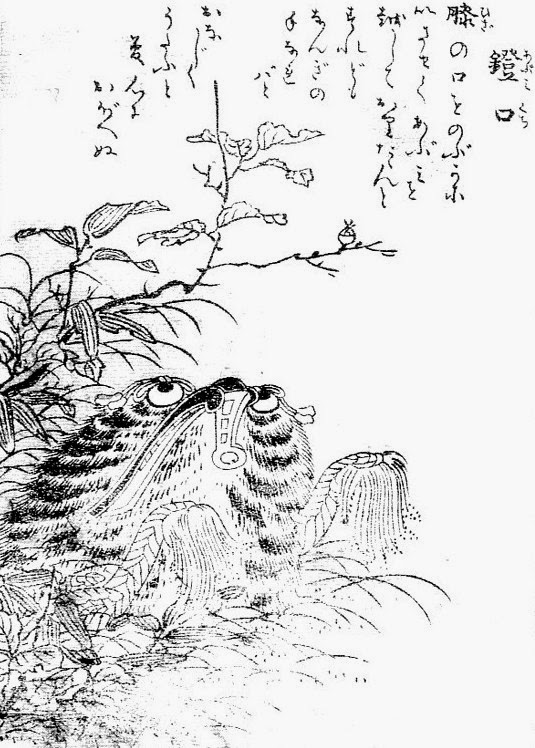The Bakezori, a possessed straw sandal, uses his life to scamper around all night chanting "Kararin, kororin, kankororin, managu mittsu ni ha ninmai!” which is apparently meant to mock the more prestigious wooden sandal. The Boroboroton, or animate futon, on the other hand, is downright murderous. In the middle of the night he will throw his owner out of bed and begin to wrap around the sleeper’s head and neck in an attempt to strangle him. The umbrella spirit, or Kasa-obake, is a relatively modern creature, not appearing in any of the older folklore, but it’s one of the most well-known and popular today. It has one eye and jumps around on one hairy leg.
Many Tsukumogami seem motivated by loneliness. For example, musical instruments
 will play by themselves the tunes that former owners used to play, or which were especially poignant, and the sad Abumi-guchi, stirrup-mouth creature, waits forever on the battlefield for its dead soldier to return. But most Tsukumogami are less patient with neglect. They search out other Tsukumogami and either throw boisterous parties together at night, or run away from home together.
will play by themselves the tunes that former owners used to play, or which were especially poignant, and the sad Abumi-guchi, stirrup-mouth creature, waits forever on the battlefield for its dead soldier to return. But most Tsukumogami are less patient with neglect. They search out other Tsukumogami and either throw boisterous parties together at night, or run away from home together.Always excepting the murderous futon or the possessed roll of cotton, which will try to smother travelers, I think it would be quite interesting to meet a wandering Tsukumogami. Naturally my imagination tends first toward something like Lumiere or Mrs Potts from Disney’s “Beauty and the Beast,” but I think Tsukumogami are an idea with a lot of different interesting possibilities for fantasy.
[Pictures: Boroboroton,
Abumi-guchi, wood block prints (presumably) by Toriyama Sekien from Gazu Hyakki Tsurezure Bukuro, c 1781 (Images from Wikimedia Commons).]


Fun! I have an old Japanese paper umbrella that has been in my attic for several generations. This seems like a good candidate. Should I venture up there some dark night just to check on it?
ReplyDeleteHmmm... That might be a good idea! Who knows what shenanigans it's been getting up to?
ReplyDelete